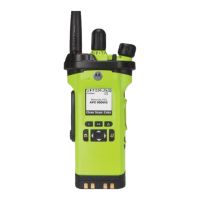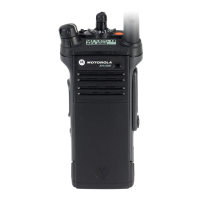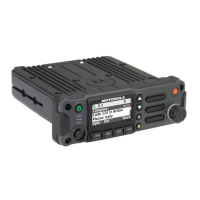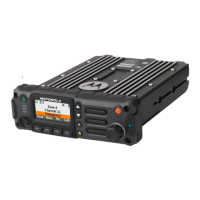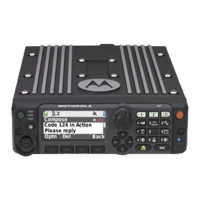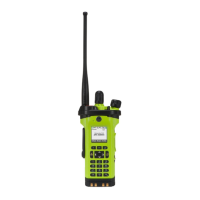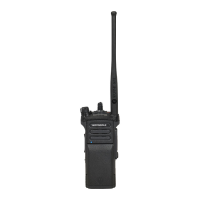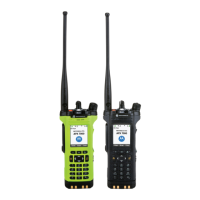Index-2 Index
transceiver (RF) board
UHF1/700–800 MHz 8-68, 8-85, 8-146, 8-163,
8-224, 8-241, 8-301, 8-318, 8-366
power
amplifier transistor 3-13
conditioning components, transceiver 3-8
power control
detailed theory 3-14
power distribution
block diagram 2-2
keep-alive mode 2-2
radio 2-1
power-up self-check
diagnostics and repair 4-5
errors 4-4
R
radio
keep-alive mode 2-2
power distribution 2-1
receiver
analog to digital converter
detailed theory 3-11
block diagram 3-8, 3-9, 3-16, 3-17, 3-18
UHF1 front-end
detailed theory 3-10
VHF front-end
detailed theory 3-10
reference oscillator Y701, FGU 3-18
reverse power protection, transmitter 3-14
S
schematics
transceiver (RF) board
UHF1 8-29, 8-107, 8-185, 8-263, 8-339
transceiver board list 8-1
service tools, recommended 4-2
standard supply voltages 4-3
symbols
caution 1-2
danger 1-2
warning 1-2
synthesizer
FGU 3-18
system clocks
troubleshooting 4-3
T
terms and definitions Glossary-1
thermal cutback, transmitter power control 3-15
tools, recommended service 4-2
transceiver
battery connector M101 3-7
block diagram 3-4, 3-5, 3-6, 3-7
board overlays
UHF1 8-64, 8-66, 8-142, 8-144, 8-220, 8-222,
8-297, 8-299, 8-364
interconnections 3-7
parts list
UHF1/700–800 MHz 8-68, 8-85, 8-146, 8-163,
8-224, 8-241, 8-301, 8-318, 8-366
power conditioning 3-8
transmitter
antenna switch 3-13
directional coupler U101 3-13
driver amplifier U102 3-12
harmonic filter 3-13
introduction 3-11
power amplifier transistor 3-13
power control 3-14
reverse power protection 3-14
transmitter power control
current control mode 3-15
PA offset, control voltage gain scaling 3-15
thermal cutback 3-15
voltage control mode 3-14
trident IC U702, FGU 3-18
troubleshooting
bluetooth 5-53
bluetooth,CW on spectrum analyzer 6-57
charts listing 5-1
DC supply failure 5-15
fgu 5-45
handling precautions 4-1
main chart 5-3
power-up failure 5-4
power-up self-check
diagnostics and repair 4-5
errors 4-4
secure hardware failure 5-33
service tools 4-2
standard supply voltages 4-3
system clocks 4-3
VOCON
PA 5-59
Rx RF 5-34
troubleshooting waveforms
12MHz clock 6-4
16.8 MHz clock 6-5
24 MHz clock 6-6
32 kHz clock 6-2
4 MHz clock 6-3
audio ssi, bclk 6-10
audio ssi, red rx 6-8
audio ssi, red tx 6-7
audio ssi, sync 6-9
bluetooth,CW on spectrum analyzer 6-57
bluetooth,startup timing difference,TP10 to TP13 and
time statistics 6-55
bluetooth,startup timing difference,TP11 to TP13 and
time statistics 6-56
bluetooth,startup timing difference,TP13 to TP16 and
time statistics 6-54
bluetooth,startup timing sequence,TP4 to TP16 and
time statistics 6-44
bluetooth,startup timing sequence,TP4 to TP5 and
time statistics 6-45
bluetooth,startup timing sequence,TP5 to TP16 and
voltage statistics 6-43
bluetooth,startup timing sequence,TP9 to TP16 6-42
bluetooth,startup timing sequence,Vmax of TP10 and
voltage statistics 6-50
bluetooth,startup timing sequence,Vmax of TP11 and
voltage statistics 6-53
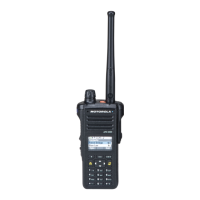
